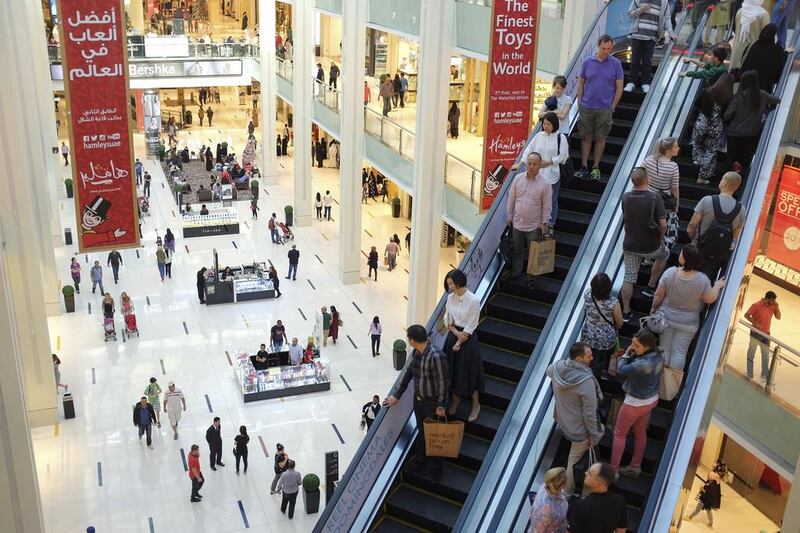If you build it, they will come. Build a mall and people will shop.
It’s widely accepted that Victor Gruen is the father of the modern shopping mall. Fleeing Nazi-occupied Austria, Gruen arrived in the United States in 1938 with just $8 (Dh29) in his pocket and no English on his tongue. He was, however, a trained architect and was soon able to find employment.
By 1951 he had opened his own firm, Victor Gruen Associates. A year later he designed Southdale, bringing the outdoors indoors in the form of a fully enclosed climate-controlled shopping centre – the mall was born.
Could Gruen ever have imagined that his idea would one day find its largest and most spectacular incarnations arising out of the Arabian sands? Qatar, for example, has no shortage of spectacular malls. The Villaggio, with its 100,000 square metres of retail space and indoor gondola ride, instantly springs to mind. Then, of course, there is the Dubai Mall, the world’s largest by total area. Meanwhile, in Saudi Arabia, Al Futtaim group is planning to build the 250,000 sqm Al Diriyah Festival City mall.
Why has the mall proven so popular in the Arabian Gulf?
For one thing, bringing the outdoors indoors makes a lot of sense when outdoor temperatures can reach close to 50°C.
Another factor has to be the relatively young population (around half the population is under 25) and the relatively high levels of disposable income enjoyed by many citizens and residents. Given such factors, malls make a lot of sense.
On the flip side of this, however, is the idea that the mall elevates and promotes a mindless materialistic consumer culture. People are respected, admired and congratulated for what they purchase, rather than for what they produce, create or achieve.
In its most vacuous incarnation, a person’s own sense of identity and self-worth can become inextricably bound to the brands they consume at the mall. But in defence of the mall, people will often talk about “retail therapy”. Is it true?
Maybe, in small doses, the act of shopping can be therapeutic, giving us a mood lift or chasing the blues away.
However, like other forms of medication, maybe it is also open to abuse – even potentially addictive.
Psychologists and psychiatrists have debated the exact status of “shopping addiction” (compulsive buying disorder) for decades. The main issue has nothing to do with whether this is a real problem or not, but rather how best to categorise the problem.
Some argue that compulsive buying should be viewed as an addiction, some suggest it is an impulse-control disorder, while the rest contend that it is best viewed as a mood or obsessive compulsive disorder.
These views aside, the problems associated with compulsive buying are very real. People can run up huge debts, damage trust and destroy relationships. Even those with inexhaustible finances suffer, and they can be plagued by feelings of guilt and shame for what they may themselves perceive as excess, wastefulness and a lack of self -control.
Dr Justin Thomas is an associate professor of psychology at Zayed University and author of Psychological Well-Being in the Gulf States
On Twitter: @DrJustinThomas





